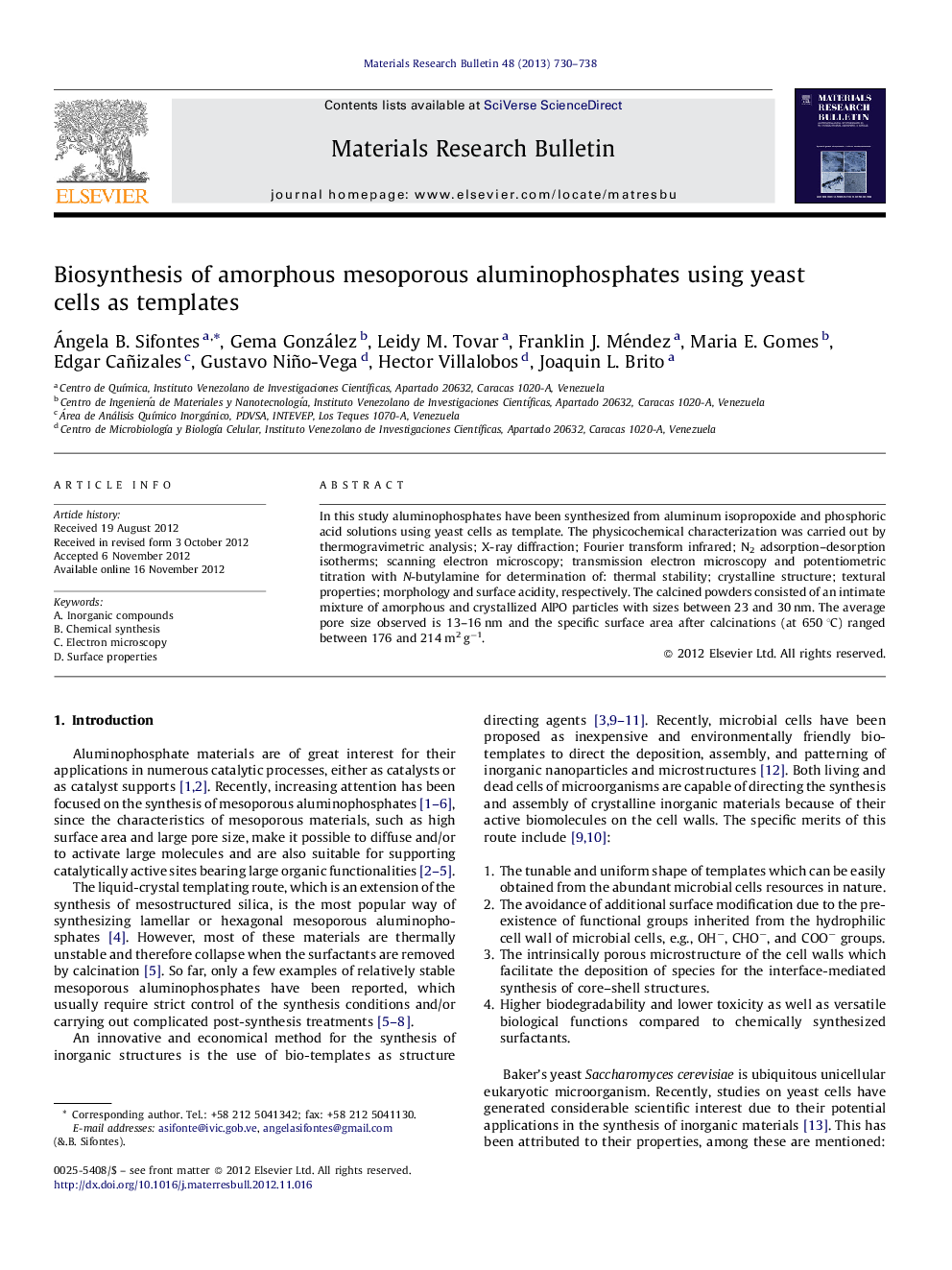| Article ID | Journal | Published Year | Pages | File Type |
|---|---|---|---|---|
| 1489895 | Materials Research Bulletin | 2013 | 9 Pages |
In this study aluminophosphates have been synthesized from aluminum isopropoxide and phosphoric acid solutions using yeast cells as template. The physicochemical characterization was carried out by thermogravimetric analysis; X-ray diffraction; Fourier transform infrared; N2 adsorption–desorption isotherms; scanning electron microscopy; transmission electron microscopy and potentiometric titration with N-butylamine for determination of: thermal stability; crystalline structure; textural properties; morphology and surface acidity, respectively. The calcined powders consisted of an intimate mixture of amorphous and crystallized AlPO particles with sizes between 23 and 30 nm. The average pore size observed is 13–16 nm and the specific surface area after calcinations (at 650 °C) ranged between 176 and 214 m2 g−1.
Graphical abstractFigure optionsDownload full-size imageDownload as PowerPoint slideHighlights► Amorphous aluminophosphates can take place using yeast as template. ► A mesoporous material was obtained. ► The specific surface area after calcinations ranged between 176 and 214 m2 g−1.
